Deborah Swift's Blog, page 49
July 7, 2011
A Writing Saint
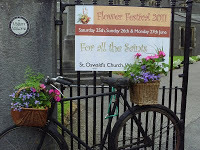
The village where I live has a fantastic flower festival every year, where various individuals and organisations dress the church with floral tributes. The theme this year was "For All the Saints" and there were 17 displays in all. Each had a picture of the Saint and a depiction of their attributes in flowers. There were the obvious ones, like Francis of Assisi, complete with birds flocking around him, and the less obvious like St Bernard Mizeki who was murdered in Africa as late as 1896 in a tribal uprising. The amount of work that had gone into these displays was awe-inpiring.
 But of course my favourite was Saint Luke, who is believed to have written Acts as well as his own Gospel. I can imagine him sitting there with his blank sheet and writer's block, and thinking what can I blog about today?! He was a physician before he became a great friend of St.Paul and was convinced by him of his faith. Thus he is the patron saint of physicians, and also of all creative artists including writers.
But of course my favourite was Saint Luke, who is believed to have written Acts as well as his own Gospel. I can imagine him sitting there with his blank sheet and writer's block, and thinking what can I blog about today?! He was a physician before he became a great friend of St.Paul and was convinced by him of his faith. Thus he is the patron saint of physicians, and also of all creative artists including writers.Whoever made his display had done it beautifully and included some healing herbs such as digitalis (foxglove) and his writing implements.
Also beautiful was the tumbling ivy in a swathe around the pulpit. What you will be unable to experience from my pictures is the scent and light. So many flowers gave off a wonderful aroma in the church, and the light pouring through the stained glass was breathtaking.
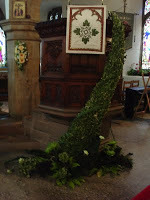
Published on July 07, 2011 06:38
July 1, 2011
Books on the Move
 I'm privileged to have a mobile library that visits our village once a fortnight. Originally set up to visit care homes and sheltered housing for the elderly in our area, it also stops at several villages including ours.
I'm privileged to have a mobile library that visits our village once a fortnight. Originally set up to visit care homes and sheltered housing for the elderly in our area, it also stops at several villages including ours. The driver, Gerry, who has won an award for the best mobile librarian, told us this week that because of restructuring, the service will be stopping for slightly less time in future, so we will have to be quick if we want to change our books. It is quite a skill being able to drive this monster down our country lanes, and then still be able to have a conversation about books. The library service is not just about access to books, but about the expertise of the librarians who can help you to find just the title you need.
Last week I nearly forgot it was 'library day' and my husband had to yell, "The library's here!" and I had to hurry up the road to catch it before it left. Inside the van it can be a squash working round the other people who are also returning books or browsing. Evidence of its visits to Care Homes is in the big selection of Large Print books on the shelves. Apparently there are Large Print reading groups in some of the homes.
 Magna Books - large is beautiful
Magna Books - large is beautifulThe Lady's Slipper is being published by Magna Books in large print. Last week I passed through the small Yorkshire village of Long Preston where they are based and stopped to take this pic. Long Preston has a lovely village green with a maypole, and an old-fashioned inn. The stone building on the left houses this publisher. Through the windows I could see cardboard boxes of books - I hope mine's in one of them and that soon it will be gracing the shelves of our mobile library and available to borrow at all the care homes the big yellow van visits. And I hope with the advent of ebooks large print companies such as Magna will find a way to continue to survive.
Published on July 01, 2011 03:27
June 29, 2011
The Book of Fires by Jane Borodale
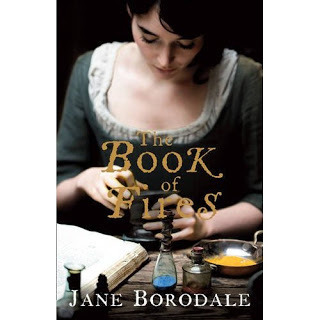 Agnes Trussel has a secret, she is pregnant and on the run. Fortunately for her she loses her way and never gets to stay with the enigmatic beauty she meets on the coach to London. Just as well, for Lettice Talbot is a courtesan and comes to a bad end. Instead Agnes finds herself inadvertently apprenticed to a firework maker, which takes her on a parallel but very different path.
Agnes Trussel has a secret, she is pregnant and on the run. Fortunately for her she loses her way and never gets to stay with the enigmatic beauty she meets on the coach to London. Just as well, for Lettice Talbot is a courtesan and comes to a bad end. Instead Agnes finds herself inadvertently apprenticed to a firework maker, which takes her on a parallel but very different path. The plot is not a fast paced one, but this does not matter because the 18th century is beautifully evoked - from the Trussel's rural farm where they eke out an existence, to the descriptions of the intricacies of pyrotechny. The novel seems to have been painstakingly researched, and the research is a big part of the book. The set pieces of slaughtering and curing a pig, and of creating fireworks, though long, are fascinating to read.
The relationships are finely drawn, particularly that of Blacklock the firework maker and Agnes, whose shyness and misunderstanding of each other ring painfully true. None of the characters are obviously likeable, but that makes them all the more human and interesting.
The novel takes place over the nine months that it takes Agnes to deliver her child, and the passage of time is so skilfully done it feels real. I borrowed this book from the library, but I shall be buying Jane Borodale's next because the quality of the writing in this novel is outstanding.
Published on June 29, 2011 12:12
June 27, 2011
Art and The Landscape
One of my most long-standing friends had an exhibition of her paintings over the weekend. Laney and I go back a long way - right back to our teens when we were at the same Art College doing a Foundation Course, and we have stayed in touch ever since despite lengthening distances and changing life circumstances.
Laney is a painter and printmaker who makes landscapes in mixed media and is particularly interested in ancient rocks and trees, and in uncovering evidence of man's early spirituality through her work. She paints with chalk and charcoal and wash, I paint my landscapes with nouns, adjectives and verbs. There is a commonality in what we do, which has helped cement our friendship. So it was a real pleasure for me to drive over to her "Open Studio" to see her some of her work displayed in her studio and house. Only then did I realise what a body of work and what a superb collection her recent work is. Of course she had sold seventeen of her paintings by the time I got there, and eighteen by the time I left!
 As creative people we need these times to take stock of what we've achieved. A pause to reflect.
As creative people we need these times to take stock of what we've achieved. A pause to reflect.
For a writer, it might be seeing your work roll out of the printer, or a book on a shelf. For an artist, the chance to see all your work in one place is a marker of what you've achieved and a visual snapshot of your current approach to life.
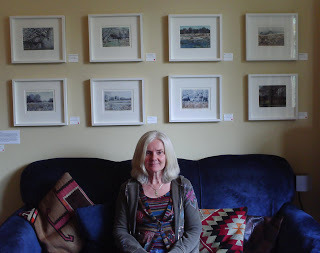
For me, seeing Laney's approach, which is to find interest and beauty in the every day landscape where she walks her dogs, made me pause and look again at the landscape, see new things I might not have seen before. And I realised that writing is an essentially visual endeavour. The pictures are everything. And words are a plastic medium we can manipulate in all sorts of different ways. But both writing and painting require that we really look, pay attention, and find new ways to express what is hidden beneath plain view.
 If you want to see more of Laney's work you can go to her website
If you want to see more of Laney's work you can go to her website
Laney is a painter and printmaker who makes landscapes in mixed media and is particularly interested in ancient rocks and trees, and in uncovering evidence of man's early spirituality through her work. She paints with chalk and charcoal and wash, I paint my landscapes with nouns, adjectives and verbs. There is a commonality in what we do, which has helped cement our friendship. So it was a real pleasure for me to drive over to her "Open Studio" to see her some of her work displayed in her studio and house. Only then did I realise what a body of work and what a superb collection her recent work is. Of course she had sold seventeen of her paintings by the time I got there, and eighteen by the time I left!
 As creative people we need these times to take stock of what we've achieved. A pause to reflect.
As creative people we need these times to take stock of what we've achieved. A pause to reflect.For a writer, it might be seeing your work roll out of the printer, or a book on a shelf. For an artist, the chance to see all your work in one place is a marker of what you've achieved and a visual snapshot of your current approach to life.

For me, seeing Laney's approach, which is to find interest and beauty in the every day landscape where she walks her dogs, made me pause and look again at the landscape, see new things I might not have seen before. And I realised that writing is an essentially visual endeavour. The pictures are everything. And words are a plastic medium we can manipulate in all sorts of different ways. But both writing and painting require that we really look, pay attention, and find new ways to express what is hidden beneath plain view.
 If you want to see more of Laney's work you can go to her website
If you want to see more of Laney's work you can go to her website
Published on June 27, 2011 03:09
June 24, 2011
Writing to me is......
Welcome to all those on the blog hop from http://www.blogaliciousblogs.blogspot.com/.
Writing to me is......
my entertainment, my way to explore subconscious ideas, my urge to tell a rattling good story.
I love a good drama. I'm a particular fan of BBC costume dramas, particularly the adaptations of Dickens and Jane Austen, and I love the cinema. I like big films with epic ideas. Favourite films include The Shawshank Redemption and Crouching Tiger, Hidden Dragon.
To me, writing is like running my own film in my head. You might think this would mean I'm in complete control of my ideas, with everything all neatly planned out to follow a well tied-up plot. But no. I quite often surprise myself, and that is the joy of it, the entertainment factor.
The novel I am working on right now had a character, Zachary, who was supposed to die in chapter two, but in fact he has gone on to become one of the main protagonists. He has a cunning criminal mind, and unsurprisingly I suppose, he has managed to cheat his own death. I am only just beginning to explore and get to know him in this first draft. At the end of it I will know him better and be able to go back and re-write him as a more credible and three-dimensional character.
 Often the ideas I am exploring don't come out until the end of the first draft. There is a sort of "aha!" moment then, when I suddenly think, "so that's what I'm really interested in exploring!" Then I'll go back and look at those themes in more depth. My second novel, The Gilded Lily, as well as being an adventure about two girls on the run in Restoration London, (see the lovely engraving) is about the nature of stories themselves - our own, and how we tell them. And what difference the stories people tell about us make to our lives. I didn't know until I finished the book and read it as a reader instead of a writer that storytelling itself was the idea that motivated the story. So that's the subconscious element.
Often the ideas I am exploring don't come out until the end of the first draft. There is a sort of "aha!" moment then, when I suddenly think, "so that's what I'm really interested in exploring!" Then I'll go back and look at those themes in more depth. My second novel, The Gilded Lily, as well as being an adventure about two girls on the run in Restoration London, (see the lovely engraving) is about the nature of stories themselves - our own, and how we tell them. And what difference the stories people tell about us make to our lives. I didn't know until I finished the book and read it as a reader instead of a writer that storytelling itself was the idea that motivated the story. So that's the subconscious element.
The third thing writing is to me - telling a good story - is because I love to read. My house is weighed down with books. No chance of a Dorothy in the Wizard of Oz for me, the house is just too heavy! I always loved it as a child when a story really gripped me and would not let go, so when I'm writing I'm looking for that same effect. And when I'm hooked into my writing I know my readers might get hooked too.
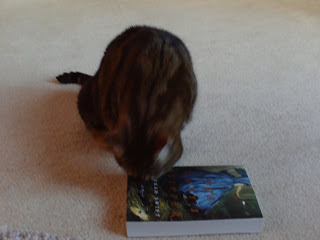 Even my cat loves to read (well, my book anyway!) I think most writers are readers first and writers second. So I am looking forward to reading the other posts on this blog hop. And for readers who have stopped by, nice to have you here.
Even my cat loves to read (well, my book anyway!) I think most writers are readers first and writers second. So I am looking forward to reading the other posts on this blog hop. And for readers who have stopped by, nice to have you here.
Writing to me is......
my entertainment, my way to explore subconscious ideas, my urge to tell a rattling good story.
I love a good drama. I'm a particular fan of BBC costume dramas, particularly the adaptations of Dickens and Jane Austen, and I love the cinema. I like big films with epic ideas. Favourite films include The Shawshank Redemption and Crouching Tiger, Hidden Dragon.
To me, writing is like running my own film in my head. You might think this would mean I'm in complete control of my ideas, with everything all neatly planned out to follow a well tied-up plot. But no. I quite often surprise myself, and that is the joy of it, the entertainment factor.
The novel I am working on right now had a character, Zachary, who was supposed to die in chapter two, but in fact he has gone on to become one of the main protagonists. He has a cunning criminal mind, and unsurprisingly I suppose, he has managed to cheat his own death. I am only just beginning to explore and get to know him in this first draft. At the end of it I will know him better and be able to go back and re-write him as a more credible and three-dimensional character.
 Often the ideas I am exploring don't come out until the end of the first draft. There is a sort of "aha!" moment then, when I suddenly think, "so that's what I'm really interested in exploring!" Then I'll go back and look at those themes in more depth. My second novel, The Gilded Lily, as well as being an adventure about two girls on the run in Restoration London, (see the lovely engraving) is about the nature of stories themselves - our own, and how we tell them. And what difference the stories people tell about us make to our lives. I didn't know until I finished the book and read it as a reader instead of a writer that storytelling itself was the idea that motivated the story. So that's the subconscious element.
Often the ideas I am exploring don't come out until the end of the first draft. There is a sort of "aha!" moment then, when I suddenly think, "so that's what I'm really interested in exploring!" Then I'll go back and look at those themes in more depth. My second novel, The Gilded Lily, as well as being an adventure about two girls on the run in Restoration London, (see the lovely engraving) is about the nature of stories themselves - our own, and how we tell them. And what difference the stories people tell about us make to our lives. I didn't know until I finished the book and read it as a reader instead of a writer that storytelling itself was the idea that motivated the story. So that's the subconscious element.The third thing writing is to me - telling a good story - is because I love to read. My house is weighed down with books. No chance of a Dorothy in the Wizard of Oz for me, the house is just too heavy! I always loved it as a child when a story really gripped me and would not let go, so when I'm writing I'm looking for that same effect. And when I'm hooked into my writing I know my readers might get hooked too.
 Even my cat loves to read (well, my book anyway!) I think most writers are readers first and writers second. So I am looking forward to reading the other posts on this blog hop. And for readers who have stopped by, nice to have you here.
Even my cat loves to read (well, my book anyway!) I think most writers are readers first and writers second. So I am looking forward to reading the other posts on this blog hop. And for readers who have stopped by, nice to have you here.
Published on June 24, 2011 02:36
June 20, 2011
The Beauty of Independence
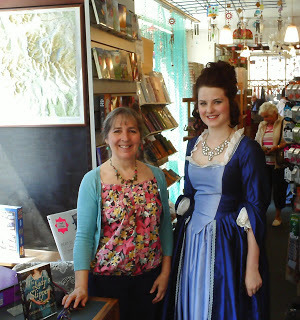
I was lucky enough to do a signing in my local bookshop on Saturday as part of Independent Booksellers Week. The Carnforth Bookshop hosted me and went to the sort of trouble that only an independent bookshop would.
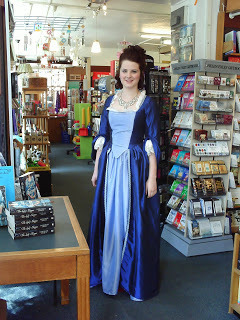
The manager had made a beautiful 17th century costume which stood in the shop window, and on the day was worn by my protagonist's namesake, Alice, a local student who I discovered also had an artistic career in mind. I hope she will not get herself into trouble stealing an orchid, like my heroine!
This is exactly the sort of creativity and thinking that enables the independent bookseller to respond to market needs and its own local community.
In the delightful upstairs room, crammed with all manner of hardback non-fiction, some dating back eighty or more years, I gave a talk to a lovely group of people who were happy to discuss books over a coffee whilst waiting for everyone to assemble.
Looking round these second-hand shelves the talk got onto ebooks, and the fact that ebooks are so disposeable that in fifty years time things published in ebook format might well be lost to us, whereas these titles were still with us and available for us to enjoy.
Although the turnout was small, everyone seemed to enjoy themselves and appreciate the effort that had gone into the event.
Love your Local Bookshop here!
Further reading: Guardian article about the survival of local bookshops http://www.guardian.co.uk/books/2010/jun/14/independent-bookshops-survive
Published on June 20, 2011 02:50
June 14, 2011
Tuesday Tip - The Castle on your Doorstep
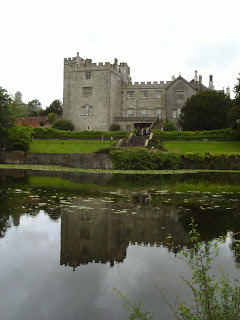
Often we fail to appreciate what is on our doorstep. A mere eight miles from where I live is the glorious Sizergh Castle, described in Simon Jenkin's book "The Thousand Best Houses" as one of "the twin glories of the Elizabethan North."
The other of course is Levens Hall, which I know well and used as a model for Fisk Manor, the home of Geoffrey and Stephen Fisk in The Lady's Slipper. I love to sit in an actual location and write a scene. It helps give realism to the architecture and a sense of place.
So when my sister came to stay we went on a long overdue visit to Sizergh Castle, ancient seat of the Strickland family since the 13th century and still inhabited by the same family today. There are photos of family members in 1980's shoulder pads amongst the gloomy-looking portraits, quite a few of them from the Stuart period in which I have a particular interest.

Apart from these gorgeous gates - just right for driving a carriage and pair through, the highlight for me was the Inlaid Chamber - a panelled bedroom, with a hanging plasterwork ceiling. This is mind-bogglingly ornate, the inlaid panelling made of poplar and bog-oak to give a rich texture of ornate renaissance motifs. It must have cost a fortune, but the sheer extravagance came in handy later on during hard times. The panelling was sold off to the V&A Museum by an embarrassed and cash-strapped Strickland for £1000 some years back, but the V&A, magnanimous as usual, have loaned it back for dispay in the house.
Selling off the family panelling might well now make an appearance in my next book, as I like the idea of a hard-up aristocrat stripping away the wealth and luxury to leave a bare room.
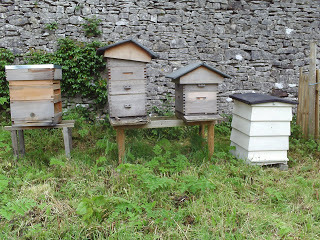
As well as an interesting tour around the house, the gardens at Sizergh are a delight, with barns and beehives, rockeries and topiary.
So my Tuesday Tip for writers is to visit that hidden gem that is not very far away, that you have always been meaning to visit, but haven't quite got round to yet.
Published on June 14, 2011 06:52
June 11, 2011
A Question of Balance
 Hello to my fellow writers from She-Writes on the blog hop, and to new readers. Here you will find my writing tips every Tuesday (The Tuesday Tip), book reviews, and snippets about how I research my books. Visible on the blog at the moment are a review and an article on "The Poisonous Garden." I look forward to connecting with you via your blogs over the weekend. Happy hopping!
Hello to my fellow writers from She-Writes on the blog hop, and to new readers. Here you will find my writing tips every Tuesday (The Tuesday Tip), book reviews, and snippets about how I research my books. Visible on the blog at the moment are a review and an article on "The Poisonous Garden." I look forward to connecting with you via your blogs over the weekend. Happy hopping!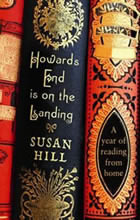 Blogging and Balance
Blogging and BalanceWe all like to have new followers for our blogs, and that is why most of us jump on to a blog hop, not to mention getting interest from visiting with other bloggers. But this week I have been reading Susan Hill's "Howard's End is on the Landing", and it made me stop and think for a moment about my use of the internet and my online activities.
In her book, Susan describes how she gave up buying books for a year and read only what was already in the house - long forgotten favourites, half-remembered purchases, odd things that had somehow appeared on her shelves. Not only did it enable her to settle back with some classics without the pressure to buy the latest best-seller, but it also re-aquainted her with the stamina to read long and deep works of fiction.
She limited her internet use too, and found that her attention span for longer books increased. Now I'm not suggesting we should all do this, but I realised that there is a subtle pressure to build a following on the internet, particularly for writers, who feel they must now have a "following" even before they are published in order to stand a chance of attracting a publisher. For published writers the pressure is even more, as they struggle to attract sales through a frenzy of online publicity. This can feel as though you are being bullied by the internet.
There is a plethora of advice about how to get your blog noticed, and it is tempting to try to follow it all, running yourself ragged in the process clicking madly on different advice sites and tips for bloggers.
So today I took a deep breath, to smell the roses. I have posted this a bit late because I wanted to spend time in my lovely garden, rather than in the virtual world. And I think it is important to blog for my own pleasure, not because I am trying to build an empire of followers.
It's a question of balance, I think.
Published on June 11, 2011 02:47
Welcome She-Writers
Hello to my fellow writers from She-Writes on the blog hop, and to new readers. Here you will find my writing tips every Tuesday (The Tuesday Tip), book reviews, and snippets about how I research my books. Visible on the blog at the moment are a review and an article on "The Poisonous Garden." I look forward to connecting with you via your blogs over the weekend. Happy hopping!
Published on June 11, 2011 02:47
June 9, 2011
Mistress of My Fate by Hallie Rubenhold
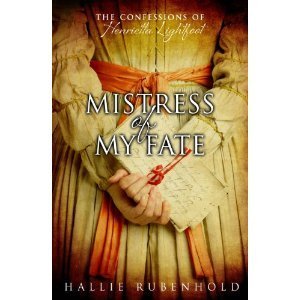
When I pick up a novel written by a former historian I always wonder if it will turn out to be over-heavy on the factual detail, but I need not have worried with this rumbustuous adventure by Hallie Rubenhold.
Set in the late 18th century when society is arguably at its most decadent, the book begins the story of innocent 17 year old girl as she flees Melmouth House after the death of her 'sister', for which she has the blame. Penniless, she meets George Allenham who sets her up as his mistress, and gives her a new name. A new life begins, and the somewhat green Henrietta Lightfoot thinks she has found her one true love.
When he mysteriously disappears, she must track him down in order to survive, and the rest of the book concerns this search for her lover as she struggles from one dangerous location to the next. By the end of the book we have been thoroughly entertained in brothels and the seamier side of Covent Garden, but the central mystery remains thus leaving Henrietta Lightfoot with more work to do.
There are more volumes of the tale to come, all to be published by Doubleday, hence the few loose ends at the conclusion of the book. This was still a satisfying read though, and if I suspected that the book might be racy (subtitled as it was "The Confessions of Henrietta Lightfoot") I found there was nothing offensive about the descriptions of Ms Lightfoot's encounters with bawds, men with wandering hands, and other gentlemen of ill-repute. The historical detail is beautifully done.
What will determine your enjoyment of this novel is the "voice" of its heroine. It begins by adressing you as "My dear reader" and Henrietta continues to do this throughout. The effect of this is to distance the reader from the drama, as it is always being told as if it is a piece of gossip. This makes the voice very intimate, but also means the reader never quite enters Henrietta's head, so the tale is told in the same tone throughout, a bit like a visit to a favourite eccentic aunt. This will probably work well for some readers but not others. If you like Henrietta's style then you have a treat in store - two more volumes are scheduled.
I chose this to review from the Amazon "Vine" programme, and it has not yet been released - when it is, I'm sure it will appeal to readers looking for a well-researched lightweight historical romp.
Published on June 09, 2011 07:18



